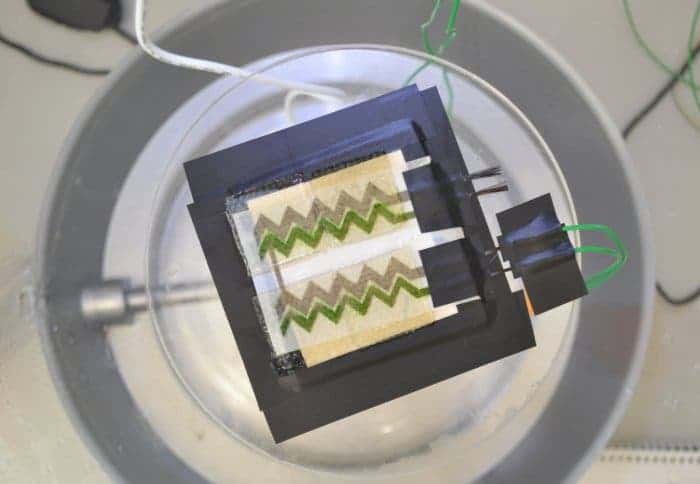
British researchers have achieved a breakthrough in biophotovoltaics (BPV) by printing electronic circuits and bacteria at the same time. The biological solar panel produce electricity both day and night, unlike conventional photovoltaic cells that are entirely reliant on sunshine. The entire device is also biodegradable, making it ideal for a disposable solar cell or battery that can decompose in composts or gardens.
“Cheap, accessible, environmentally friendly, biodegradable batteries without any heavy metals and plastics – this is what we and our environment really need but dont have just yet, and our work has shown that it is possible to have that,” said Marin Sawa from Imperial College London.
The living solar cells
Cyanobacteria are crucial organisms for all of the planet’s inhabitants, including us. They are photosynthetic organisms that have been living on Earth for billions of years. Up until 2.45 billion years ago, organisms had to rely on sulfate for their energy needs. But during a period known as Great Oxidation Event, for the first time, oxygen became a major component of the Earth’s atmosphere, indicating that cyanobacteria had taken over using sunshine, water and carbon dioxide to produce carbohydrates and oxygen.
Sawa and colleagues have now shown how cyanobacteria could potentially be used as an ink and printed from a common inkjet printer onto electrically conductive carbon nanotubes. These nanotubes were again inkjet printed on a piece of paper to etch precise patterns. The bacteria survived the ordeal and continued to supply electricity continuously for 100 hours during both light and dark cycles, as reported in the journal Nature Communications.

However, the power they produce isn’t impressive — nine connected cells are capable of powering a digital clock or generating flashes of LED light. But that may be more than enough for some applications such as disposable environmental sensors disguised as wallpaper or paper-based sensors for monitoring patients with diabetes.
The field of biophotovoltaics, which employs cyanobacteria or algae that convert light into electricity, hasn’t really taken off. Cost, low power output, and short lifespan have all been challenges preventing the technology from scaling to an industrial level. British researchers, however, claim that their off-the-shelf inkjet printing method demonstrates the potential for scaling up the technology.
“Paper-based BPVs are not meant to replace conventional solar cell technology for large-scale power production, but instead, could be used to construct power supplies that are both disposable and biodegradable. Their low power output means they are more suited to devices and applications that require a small and finite amount of energy, such as environmental sensing and biosensors,” said Dr Andrea Fantuzzi, a co-author of the study from Department of Life Sciences at Imperial College London. \
The current paper-based BPV unit is palm-sized. The next step will see the team scale up their proof-of-concept to A4 size to determine the electrical output on a larger scale, as well as more powerful, long-lasting and robust.






